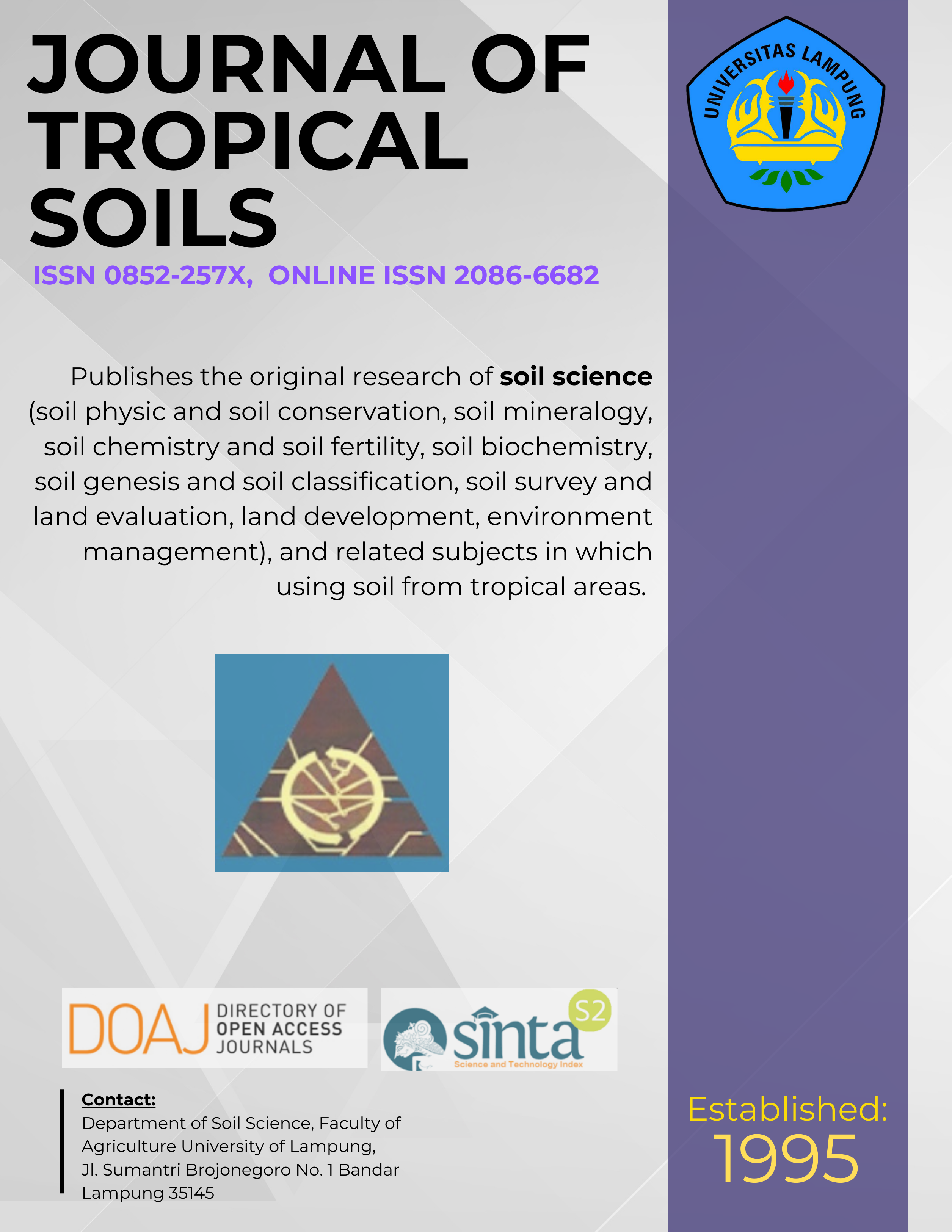Efficiency Test of IRRI Fertilizing Recommendations on Rainfed Low Land Rice Field in West Kalimantan
Main Article Content
Abstract
Fertilizing recommendation for lowland rice field in West Kalimantan is still in national scale and tends to be excessive. It is less relevant due to various factors such as the test method competence, the carrying capacity of the land, and the diverse condition of rice field agro-ecosystem. Site-specific nutrient management (SSNM) is an approach for rice fertilizing on paddy plot based on science, history of land fertilization, and nutrient sources surrounding the area which can affect soil fertility level and soil conservation.This study was aimed to examine fertilizing efficiency of N, P, and K and the increased productivity of rice by utilizing software (website) of the IRRI. The study was conducted in farmers fields in two villages, i.e. Anjongan and Pak Bulu, Pontianak Regency, West Kalimantan. The results showed that the SSNM fertilization on rice increased yields by the average of 0.62 t ha-1 (13.47%) per growing season. The efficiency of SSNM fertilization was on the average of 22.05% N, 48.25% P2O5, and 31.50% K2O. The additional profits obtained from the SSNM recommendation was on the average of IDR 1,886,317 per ha pergrowing season compared to the profits from the FFP (farmer fertilizer practice).
Keywords: Fertilizing efficiency, low land, rice, site specific fertilization
[How to Cite: Muhammad H, M Syam and DP Widiastuti. 2014. Efficiency Test of IRRI Fertilizing Recommendations on Rainfed Low Land Rice Field in West Kalimantan. J Trop Soils 19: 25-33. Doi: 10.5400/jts.2014.19.1.25]
Â
Â
Downloads
Article Details
Section
License for Authors
Authors who publish with this journal agree to the following terms:
- Authors retain copyright and grant the journal right of first publication with the work simultaneously licensed under a Creative Commons Attribution License that allows others to share the work with an acknowledgement of the work's authorship and initial publication in this journal.
- Authors are able to enter into separate, additional contractual arrangements for the non-exclusive distribution of the journal's published version of the work (e.g., post it to an institutional repository or publish it in a book), with an acknowledgement of its initial publication in this journal.
- Authors are permitted and encouraged to post their work online (e.g., in institutional repositories or on their website) prior to and during the submission process, as it can lead to productive exchanges, as well as earlier and greater citation of published work (See The Effect of Open Access).
License for Regular Users
Other regular users who want to cite, distribute, remix, tweak, and build upon author’s works, even for commercial purposes, should acknowledge the work’s authorship and initial publication in this journal, licensed under a Creative Commons Attribution License.

